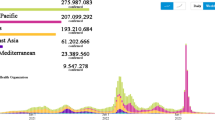Abstract
According to the United States’ Center for Disease Control and Prevention (CDC) between 39 and 56 million people in the US suffered from Influenza Like Illnesses (ILI) in the 2019-20 flue season. From which, 410 to 740 thousand were hospitalized and 24 to 62 thousand succumbed to the disease. Therefore, the existence of an early warning mechanism that can alert pharmaceuticals, healthcare providers, and governments to the trends of the influenza season well in advance, would serve as a significant step in helping combat this communicable disease and reduce mortality from it.
As reported in the [ACM Special Interest Group in Computers and Society (SIGCAS) 2020 Computers and Sustainable Societies (COMPASS)], [IEEE Technology and Engineering Management Society (TEMS) 2020 International Conference on Artificial Intelligence for Good (AI4G)], and [IEEE Global Humanitarian Technology Conference (GHTC) 2020] Long Short-Term Memory (LSTM) neural networks are utilized by Santa Clara University’s EPIC (Ethical, Pragmatic, and Intelligent Computing) and BioInnovation & Design laboratories for continued research and development of an eVision (Epidemic Vision) machine learning tool to predict the trend of influenza cases throughout the flu season.
There we reported eVision’s success in making 3, 7, and 14 weeks in advance predictions for the 2018–2019 United States flu season with 88.11%, 88%, and 74.18% accuracy respectively and delineated future steps of expanding eVision’s granularity by 1) adding state level predictions in order to enhance national predictions and 2) utilizing metropolitan area keyword trends to improve both state level and national predictions. This resulted in the improvement of the model’s accuracy to 90.38%, 91.43%, and 81.74% for 3, 7, and 14 weeks in advance predictions respectively. This paper is to report on the methodology of obtaining these improved results.
Access this chapter
Tax calculation will be finalised at checkout
Purchases are for personal use only
Similar content being viewed by others
References
Centers for Disease Control and Prevention (CDC): Preliminary in-season 2018–2019 burden estimates (2019). https://www.cdc.gov/flu/about/burden/preliminary-in-season-estimates.htm
Centers for Disease Control and Prevention (CDC): 2019–2020 U.S. flu season: Preliminary burden estimates (2020). https://www.cdc.gov/flu/about/burden/preliminary-in-season-estimates.htm
Chung, J.R., et al.: Effects of influenza vaccination in the United States during the 2018–2019 influenza season. Clin. Infect. Dis. 71, e368–e376 (2020)
De Myttenaere, A., Golden, B., Le Grand, B., Rossi, F.: Mean absolute percentage error for regression models. Neurocomputing 192, 38–48 (2016)
Centers for Disease Control and Prevention: Types of influenza viruses, 18 November 2019. https://www.cdc.gov/flu/about/viruses/types.htm
Dugas, A.F., et al.: Google flu trends: correlation with emergency department influenza rates and crowding metrics. Clin. Inf. Dis. 54(4), 463–469 (2012)
Gada, D.: Country state city DB demo (2020). https://dr5hn.github.io/countries-states-cities-database
Ginsberg, J., Mohebbi, M.H., Patel, R.S., Brammer, L., Smolinski, M.S., Brilliant, L.: Detecting influenza epidemics using search engine query data. Nature 457(7232), 1012–1014 (2009)
Google: Google flu trends (2019). https://www.google.org/flutrends/about
Google Trends Help: FAQ about google trends data (2020). https://support.google.com/trends/answer/4365533
Halbrooks, G.: What is a designated market area (DMA)?, 25 June 2019. https://www.thebalancecareers.com/what-is-a-designated-market-area-dma-2315180
Lee, V.J., et al.: Advances in measuring influenza burden of disease. Influenza Other Respir. Viruses 12(1), 3–9 (2018)
Makridakis, S.: Accuracy measures: theoretical and practical concerns. Int. J. Forecast. 9(4), 527–529 (1993)
MATLAB Help Center: Create vector autoregression (VAR) model (2020). https://www.mathworks.com/help/econ/varm.html
MDR ADC: 2014–2015 DMA’s. https://www.mdreducation.com/pdfs/dma.pdf
Rolfes, M.A., et al.: Effects of influenza vaccination in the united states during the 2017–2018 influenza season. Clin. Inf. Dis. 69(11), 1845–1853 (2019)
Santillana, M., Nguyen, A.T., Dredze, M., Paul, M.J., Nsoesie, E.O., Brownstein, J.S.: Combining search, social media, and traditional data sources to improve influenza surveillance. PLoS Comput. Biol. 11(10), e1004513 (2015)
PennState Eberly College of Science: Vector autoregressive models VAR(p) models. https://online.stat.psu.edu/stat510/lesson/11/11.2
Seladi-Schulman, J.: How are influenza a and b different? 28 March 2020. https://www.healthline.com/health/cold-flu/influenza-a-vs-b#types
Shaghaghi, N., Calle, A., Kouretas, G.: eVision: influenza forecasting using CDC, who, and google trends data. In: 2020 IEEE Technology and Engineering Management Society (TEMS) 2020 International Conference on Artificial Intelligence for Good (AI4G). IEEE (2020)
Shaghaghi, N., Calle, A., Kouretas, G.: Expanding eVision’s scope of influenza forecasting. In: 2020 IEEE Global Humanitarian Technology Conference (GHTC). IEEE (2020)
Shaghaghi, N., Calle, A., Kouretas, G.: Influenza forecasting. In: Proceedings of the 3rd ACM SIGCAS Conference on Computing and Sustainable Societies, COMPASS 2020, pp. 339–341. Association for Computing Machinery, New York (2020). https://doi.org/10.1145/3378393.3402286
Xie, W.: Spatial panel VAR and application to forecast influenza incidence rates of us states. Available at SSRN 2646870 (2015)
Acknowledgment
Many thanks are due to Ben Dorty, the New-Technology Senior Director at Cepheid Inc. for inspiring the project, and supporting it throughout development. Also to Prashanth Asuri, director of SCU’s BioInnovation and Design Lab for obtaining financial support from Cepheid Inc. And to the School of Engineering’s Frugal Innovation Hub as well as the Departments of Bio Engineering, Computer Science & Engineering, and Mathematics & Computer Science for their continued support of the eVision project. And lastly to other eVision team members: Yash Kamdar and Ron Huang, as well as past eVision team members: Yuhang Qian, Anika Shahi, Liying Liang, and Meghan McGinnis for their hard work on research, data collection, and software development in the earlier stages of the project.
Author information
Authors and Affiliations
Corresponding author
Editor information
Editors and Affiliations
Rights and permissions
Copyright information
© 2021 ICST Institute for Computer Sciences, Social Informatics and Telecommunications Engineering
About this paper
Cite this paper
Shaghaghi, N., Calle, A., Kouretas, G., Karishetti, S., Wagh, T. (2021). Expanding eVision’s Granularity of Influenza Forecasting. In: Ye, J., O'Grady, M.J., Civitarese, G., Yordanova, K. (eds) Wireless Mobile Communication and Healthcare. MobiHealth 2020. Lecture Notes of the Institute for Computer Sciences, Social Informatics and Telecommunications Engineering, vol 362. Springer, Cham. https://doi.org/10.1007/978-3-030-70569-5_14
Download citation
DOI: https://doi.org/10.1007/978-3-030-70569-5_14
Published:
Publisher Name: Springer, Cham
Print ISBN: 978-3-030-70568-8
Online ISBN: 978-3-030-70569-5
eBook Packages: Computer ScienceComputer Science (R0)




